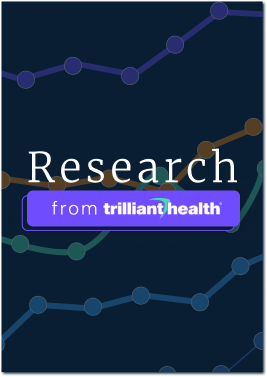Counterpoint
Hal Andrews | February 9, 2025The Category 5 Hurricane Forming in the Indiana Legislature
According to the Saffir-Simpson Hurricane Scale, in a Category 5 hurricane, “catastrophic damage will occur” and “most of the area will be uninhabitable for weeks or months.”1 What the Indiana House of Representatives is considering with HB 1003 and HB 1004 portends catastrophic damage to the operating models of every health economy stakeholder. If you haven’t read the bills, then you should stop whatever you think is more important and contemplate the implications for your organization.
In their current form, HB 1003 or HB 1004 are the State of Indiana’s gift to every health economy stakeholder of an already opened Pandora’s Box of plagues, but without any hope. We have previously highlighted the risks of what these bills propose:
HB 1003 would add this provision to the Indiana Code:
Sec. 3. After December 31, 2026, a 340B covered entity may not charge an individual for a prescription drug obtained under the program at a price that is greater than the price the 340B covered entity obtained the drug under the program.2
HB 1004 would add this provision to the Indiana Code:
Sec. 4. A nonprofit hospital that charges an amount for a service or item in excess of two hundred percent (200%) of the Medicare reimbursement rate at the time of the charge forfeits its status as a nonprofit hospital.3
Remembering the lessons of Schoolhouse Rock about these bills becoming law, my first thought is to wonder how it is that the State of Indiana is the petri dish for legislation like this and whether “advocacy groups” are operating in the background. Second, I am not naïve enough to believe that other state legislatures won’t do something similar since many already are, and particularly if “advocacy groups” are involved in Indiana. And when I think about provisions like these being codified throughout the United States of America, I think of the words of the inimitable Marshall Mathers:
“The clock’s run out, time’s up, over, blaow”4
Every health economy stakeholder should understand that the Indiana House of Representatives is, like Marshall Mather’s protagonist, trying to seize everything they ever wanted in one moment.
For four years, our research has centered on the fundamentals of economics: demand, supply and yield. We have repeatedly emphasized that healthcare is a negative-sum game, that the commercially insured population is the lifeblood of the health economy and that employers are the most important customers for every stakeholder. I have channeled my inner Marshawn Lynch in citing the late Herb Stein over and over and over: “If something cannot go on forever, it will stop.”5 Similarly, I have highlighted the conclusions of this paper from the Congressional Budget Office since it was published in September 2022, and I included this graph in last week’s edition of Counterpoint:

Most of you haven’t listened, but I can tell you that your peers in Indiana now are.
Why?
Because hospitals in Indiana have figured out that HB 1003 and HB 1004 are tantamount to a declaration of war on what is left of the not-so-free market health economy. Whether Elevance and Eli Lilly have figured that out is not yet clear.
Like you, I know that Medicaid reimbursement is insufficient to cover the cost of treatment, creating a hidden and indirect and growing tax on employers. Like you, I know that Medicare reimbursement is insufficient to cover the cost of treatment for most – but not all – providers. Like you, I also know that most health economy stakeholders pay lip service to the hard work of reducing expenses.
What I don’t know is whether the representatives in the Indiana House know what I know or even care what I know. Therein lies the danger for every health economy stakeholder.
If you haven’t figured out how you would be impacted by a proliferation of similar statutes throughout the U.S., then you should do so, in the words of Fatboy Slim, right about now. What starts with the hospitals will not end there. Price caps will limit medical loss ratios, which will limit health plan profits. Eliminating the gamesmanship of 340B pricing seems certain to impact pharmaceutical companies. And, when the “Big 3” of the health economy – hospitals, payers and pharma – get squeezed, everyone else will as well.
A government-mandated cap on commercial reimbursement rates – the yield in the health economy – will affect every health economy stakeholder.
For the record, that would not entirely be a bad thing. I certainly would not shed any tears for the brokers and benefits consultants. I would be thrilled to see quality become the primary component of measuring value in a world of reduced price variation due to price caps. At the same time, there will inevitably be unintended consequences of such legislation, most of which will affect the American consumer in ways they would neither anticipate nor understand.
Unless your business is poised to prosper in a health economy in which 100% of yield is set by Federal or state government, you might want to muster your troops for battle like William Wallace. If you don’t, prepare to get steamrolled.
And if hospitals think they can lobby against this outcome under the premise of community benefit, they should be aware that some in the Federal government have long questioned whether the value they deliver justifies the tax breaks they receive. And one member of Congress is well-known for his longstanding views on "non-tax-paying" hospitals.
Indiana’s experiment may be the first Category 5 hurricane in this fight, but make no mistake—other states, and possibly even Congress, will be watching closely.
This may be your only opportunity to prevent the destruction of your business model. Will you capture it…or let it slip?






















.png)

















.png?width=171&height=239&name=2025%20Trends%20Report%20Nav%20(1).png)
